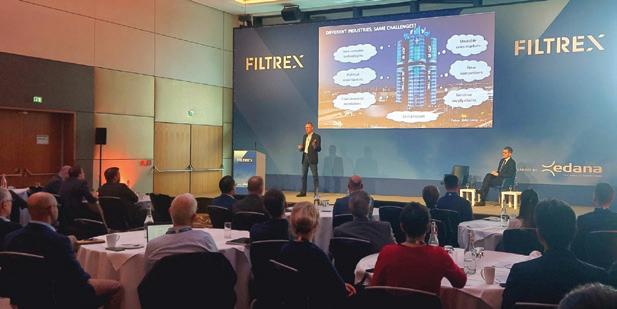
8 minute read
FFILTREX™ 2025
Key Discussions on Filtration and Sustainability
ILTREX™ 2025, the 10th edition of EDANA’s flagship event for the filtration industry – enjoyed two dynamic days of discussions, technical advancements, and industry collaboration. Over 100 professionals and experts from across the industry came together to discuss innovation, sustainability, and regulatory challenges shaping the sector – including the critical issue of PFAS use and its replacement. The event was held in Vienna, Austria. Murat Dogru, General Manager of EDANA, highlighted the significance of the event and its impact on the industry:
“I was truly encouraged by the level of expertise and engagement in the room at FILTREX™. What stood out to me was the diversity of perspectives – from materials science and testing methodologies to regulatory foresight and sustainability strategies – all contributing to a shared ambition: driving meaningful innovation in filtration,” he said. “We wanted to provide a space where standards are challenged, new ideas are tested, and cross-disciplinary thinking is encouraged. I believe we delivered on that.”
Spotlight on Sustainability in Filtration
The keynote by Dr.-Ing. Frank Möbius, Senior Innovation Advisor at UnternehmerTUM and former BMW Group Manager, highlighted the role of Open Innovation in maintaining competitiveness in an evolving market, while industry leaders addressed significant industry trends. Dr. Marc Schmidt (AAF-Lufttechnik) explored how economic and social shifts are reshaping filtration markets, while Anthony Lawson (Hengst Filtration) examined the impact of evolving air quality guidelines and PFAS restrictions on filter design. Cédric Vallet (Ahlstrom) and Christof Keppler (Gessner) presented innovations in filtration efficiency, carbon footprint reduction, and the development of biodegradable filter media. Meanwhile, Dr. Pero Mićić (FutureManagementGroup AG) offered a strategic framework for future-proofing businesses against industry disruptions.
Sustainability took center stage with a dedicated round table with insights from Oswaldo Anaya (Freudenberg Performance Materials), Cédric Vallet (Ahlstrom), and Bruce Lorange (Hollingsworth & Vose). The panel focused on how the industry can reduce its environmental impact while still delivering high-performance solutions.
The closing session tackled the critical topic of PFAS-free filtration, revealing solutions like high-performance PFAS-free HEPA media and nanofiber membranes.
Reflecting on the event, Dr. Anthony Lawson, Senior Filtration Specialist at Hengst Filtration, said, “FILTREX takes a step back and allows for a considered look at the broader aspects of the global issues that affect the entire supply chain from raw materials, through nonwovens to final filters in a single setting. It allows for presentations from all industry sectors as well as ensuring maximum participation with round table discussions on the themes presented.”
FILTREX™ Innovation Award 2025
The FILTREX™ Innovation Award went to Johns Manville for its Evalith® product. Their groundbreaking recycling process transforms HVAC glass microfiber waste into compounded pellets for injection molding, turning waste into durable, secondlife products.
is the condition in which combustionbased power plants emit CO2. However, high-energy penalty associated with conventional amine-based solvent hinders its wide implementation. Alternative lowregeneration energy solvents have been studied, but they often have slow absorption kinetics. Carbonic anhydrase (CA) shows promise as a rate enhancement catalyst for low-energy aqueous solvents used in CO2 reactive absorption process.
Textiles are ideally suited as gas-liquid (G-L) contactors and enzyme immobilization supports: they are already used in many advanced filtration media; they are lightweight, economical, flexible, and durable materials that can be fabricated in many shapes and have high surface areas and abundance of functional groups for chemical modification.
The biocatalytic textile contactors are remarkably robust across many different tested conditions, delivering similar percent CO2 capture regardless of inlet CO2 concentrations, provided that the solvent had sufficient buffering capacity for the amount of CO2 in the gas stream. The biocatalytic textile could withstand repeated washing and drying, immersion and shaking in heated solvents, and continuous testing for up to one thousand hours without performance reduction. The biocatalytic textile contactors are easy to scale up using textiles processing machinery. They will be able to meet the volume requirements for the vast CO2 capture industry and can be used either as “drop-in” in existing CO2 reactive absorption facilities or custom fit novel capture configurations such as when needed for coupling with downstream CO2 utilization processes.
Another interesting session from Angela Maria Fasnacht Ph.D., M.P.H., P.E., Andlinger Center Fellow, Princeton University, PFAS Advisor, Komline spoke on how per- and polyfluoroalkyl substances (PFAS) present significant challenges in water and wastewater treatment due to their persistence, toxicity, and widespread presence. The study presented evaluated the performance of an iterative set of combinatorial treatment solutions, including Reverse Osmosis (RO), Nano- filtration (NX), Granular Activated Carbon (GAC), Ion Exchange (IX), SurfaceActivated Foam Fractionation (SAFF), and advanced destruction techniques.
A systematic evaluation has optimized treatment efficiencies across diverse water matrices, such as drinking water, industrial effluents, and wastewater streams. Key findings highlight how matrix-specific factors, including ionic strength, organic matter content, and cocontaminants, significantly impact the removal efficiency of each technology. The study highlighted the importance of integrating multiple treatment approaches, leveraging their complementary strengths to enhance removal efficiency while addressing economic and operational constraints. Moreover, the lessons learned underscore the critical role of destruction technologies in achieving sustainable, end-to-end PFAS management, ensuring minimal environmental reintroduction.
The final takeaways from the study concluded that an PFAS treatment overall strategy pointed to the use of an innovative system design plus the right material selection, which equals effective, compliant PFAS treatment, among other factors.
Plenary Sessions on Membranes
Two plenary sessions included two interesting talks that included:

Dibakar Bhattacharyya , a Professor at the University of Kentucky, focused on the innovative potential of functionalized microfiltration membranes. These membranes tackle biotherapeutic applications like viral vector production and environmental remediation challenges, including PFAS removal and metal recovery. Bhattacharyya highlighted cutting-edge membrane filtration techniques that streamline processes, reduce costs, and boost efficiency in these critical fields.
Adil Dhalla, Managing Director, Separa- tion Technologies Applied Research and Translation (START) Centre and SG MEM, Singapore Membrane Consortium, discussed how Singapore has become a leader in water and membrane innovations, addressing the challenges of scaling laboratory-based inventions to marketready solutions, showcasing pilot-scale testing for seawater desalination and other vital water treatment technologies.
Tours Inspire Problem-Solving
The pre-event tours included visits to testing facility, Microbac Laboratories, and innovation hub GE FirstBuild.
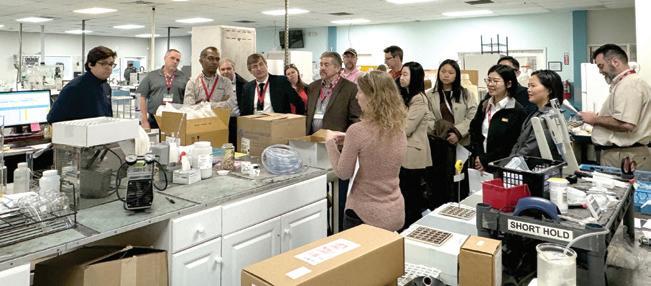
The Louisville office of Microbac Laboratories tests for the environmental and food sectors and is one of 32 locations, making the company the largest privately held laboratory group in the country. The tour included seeing the process from sample intake to active testing stations, as well as a look at filtration methods and filters commonly used in the lab.
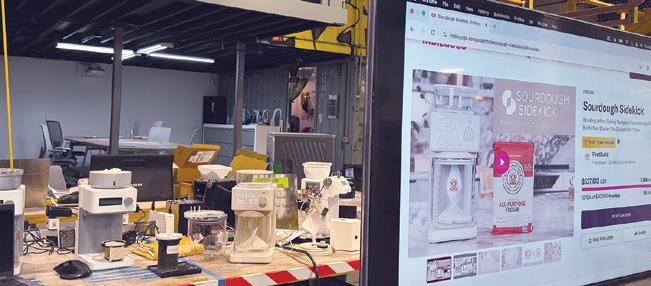
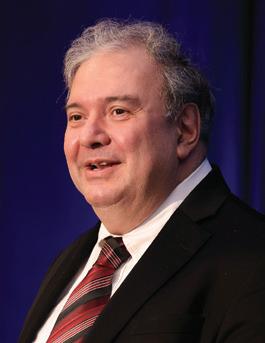
GE FirstBuild is an innovation hub for the global appliance company. They identify and prototype new product ideas for GE. What is unique is the way they test product ideas through crowdsourcing, such as in the Sourdough Sidekick campaign (above). The inventors identify a need among consumers and then engage with likely users to evaluate the products viability and design prototype. Consumers can pre-buy the appliance at a discount, and if the amount raised meets or exceeds a pre-determined amount, like $250K, then the appliance goes into mass production. This center also serves as a community workshop and resource hub for other inventors.
See www.afssociety.org for plans for FILTCON 2026.
Camfil Strengthens Global Footprint with New Presence in Nepal
Camfil has broadened its global operations by establishing a presence in Nepal, marking a significant milestone in its mission to deliver clean air solutions worldwide.
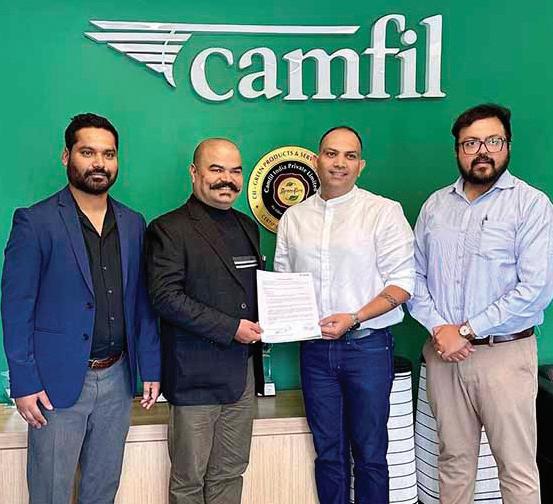
Rahul Kapoor, Managing Director of Camfil India, shared his thoughts on the development: “Nepal offers exciting potential across a number of sectors, including healthcare, pharmaceuticals, manufacturing, data centers, and hospitality. With growing awareness around air quality and its impact on health and productivity, Camfil’s solutions will play an important role in helping organizations achieve high indoor air quality standards. This initiative supports our belief that clean air should be a basic human right.”
As part of the market entry phase, Camfil’s team connected with key stakeholders in Nepal, highlighting the importance of clean air and introducing its cutting-edge air filtration technologies. In Nepal, Camfil’s offering will include Comfort Air Filtration, Clean Process Solutions, Indoor Air Quality Management, Molecular Contamination Control, and Air Pollution Control.
To ensure strong local support and service delivery, Camfil has partnered with an authorized distributor in Nepal to supply its world-class air filtration products and services. Reflecting on the company’s strategic focus in the region, Jayant Kaushal, Deputy President (APAC), said: “Camfil’s expansion into Nepal is a clear sign of our commitment to advancing air quality solutions across South Asia. As India moves forward with the adoption of IS 17570:2021/ISO 16890:2016 standards, this growth enables us to support industries and communities throughout the region even more effectively.” www.camfil.com
Mativ Appoints Shruti Singhal as President and CEO
Mativ Holdings, Inc., announced the appointment of Shruti Singhal, current member of Mativ’s Board of Directors, as President and Chief Executive Officer, effective immediately. Singhal succeeds Julie Schertell, who has stepped down as President and Chief Executive Officer, and as a director.
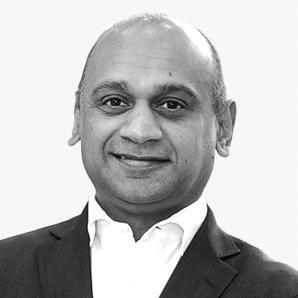
Singhal brings extensive expertise leading transformations through strong operational and commercial execution, profitability initiatives, and driving innovation. He previously served as CEO of Galata Chemicals and Chroma Color and has held roles of increasing responsibility at global businesses including DSM, General Cable, Solenis, Ashland, The Dow Chemical Company, Rohm and Haas, Cognis (now BASF) and Henkel.
Singhal holds an MS in Chemical Engineering from Drexel University, a BS in Chemical Engineering and completed the Global Marketing Management Program at The Wharton School at the University of Pennsylvania. www.mativ.com
Grundfos Joins Water Resilience Coalition
Grundfos, a world leader in pumping solutions and water technology, announced that it is joining the Water Resilience Coalition – a CEO-led initiative driving corporate action on water stress.
The Water Resilience Coalition is an initiative of the CEO Water Mandate, a partnership between the Pacific Institute and the United Nations Global Compact. By 2030, the Coalition aims to unite a critical mass of companies to build water resilience in their operations and supply chains, while also investing in collective action to improve water resilience in 100 Priority Basins, the most water-stressed basins in the world.
The Water Resilience Coalition now has 40 leading companies as members, collectively representing a market capitalization exceeding $5 trillion. www.grundfos.com


Don’t Miss Out on the IFN Buyer’s Guide. Email advertising@inda.media! Visit www.filtnews.com/buyers-guide/
Ad Sales Contacts
Driven By Design LLC PUBLISHER advertising@inda.media +1 239.225.6137
Vickie Smead BUSINESS DEVELOPMENT SALES ASSOCIATE NONWOVENS | BUYER'S GUIDE vsmead@inda.org +1 919.459.3715
Jay Mason SALES REPRESENTATIVE NEW BUSINESS sales@drivenbydesign.net +1 239.223.9408
Filippo Silvera ITALY & SPAIN info@silvera.it +39 02.284.6716
Sabine Dussey GERMANY, FRANCE, AUSTRIA, SWITZERLAND, SCANDANAVIA, BENELUX sabine.dussey@dussey.de +49 2129 5900910
Zhang Xiaohua CHINA ifj_china@126.com +86 13522898423
Please Download the 2025 Media Kit at www.filtnews.com/advertise
Cleanova Acquires Micronics
Cleanova, a leading manufacturer of filtration systems, announced that it is acquiring the Micronics Engineered Filtration Group. Headquartered in Killarney, Ireland, Cleanova is a leading clean-tech manufacturer of consumable, mission-critical, and engineered industrial filtration systems, helping customers ensure the reliability and efficiency of their industrial processes while protecting the environment.
Based in Chattanooga, Tennessee, USA, Micronics is a leading clean-tech manufacturer of filter media, industrial filtration systems, and provider of a broad range of expert field services, delivering customized liquid and air filtration solutions to meet demanding requirements across a variety of industrial applications. Micronics’ solutions help customers operate reliable processes, improve efficiencies, decrease operating costs, and contribute to environmental protection globally.
Cleanova operates under six leading filtration brands to customers, including Allied Filter Systems, Dollinger, Plenty, Vokes, Sidco, and Shawndra. Micronics’s portfolio of leading industrial filtration brands includes Micronic, SOLAFT, AFT, NFM, Filterfab, SFM, CPE, UPC, Action Filtration, and AeroPulse.
Both companies have built strong reputations for their innovation, quality, and customer service. Their missions and visions closely align, with a continual journey towards industry-leading filtration solutions, placing customers at the heart of decision-making. www.cleanova.com
ResinTech Expands Camden Facility with $10 Million Investment
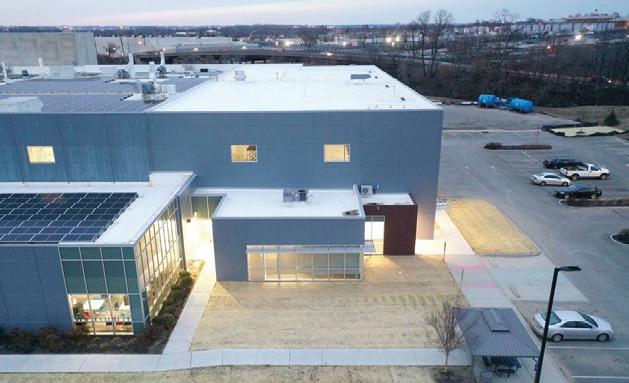
ResinTech has expanded its headquarters and manufacturing facility in Camden, New Jersey, by 30,000 square feet. The $10 million investment supports both infrastructure expansion and advanced process enhancements and is aligned with ResinTech’s commitment to quality and continuous improvement. Through their made-in-the-USA promise, the company not only meets – but exceeds – the highest quality standards for all its premium resin products.
The newly engineered processes will boost domestic ion exchange resin production by 30% in 2025 compared to 2024. With this increased capacity and high-performance filtration media, customers can solve their most complicated water problems across municipal, residential, industrial, groundwater, wastewater, and other markets. This strategic investment also reinforces ResinTech’s commitment to solving modern contamination challenges, including the removal of PFAS, lead, and pharmaceuticals. www.resintech.com










